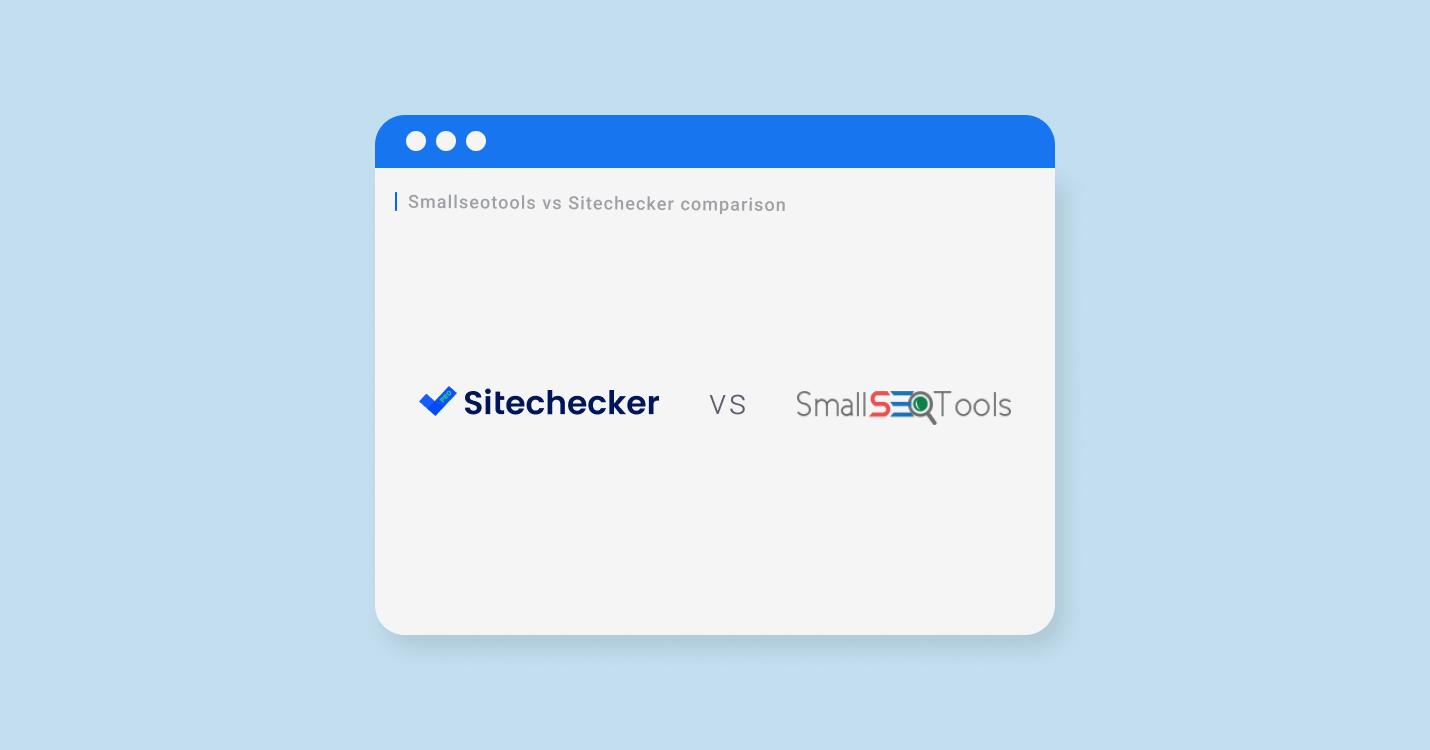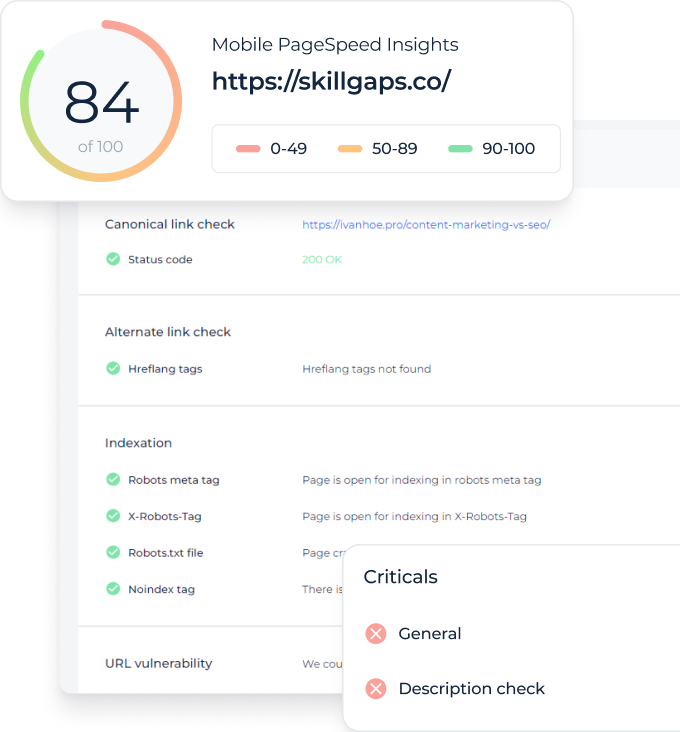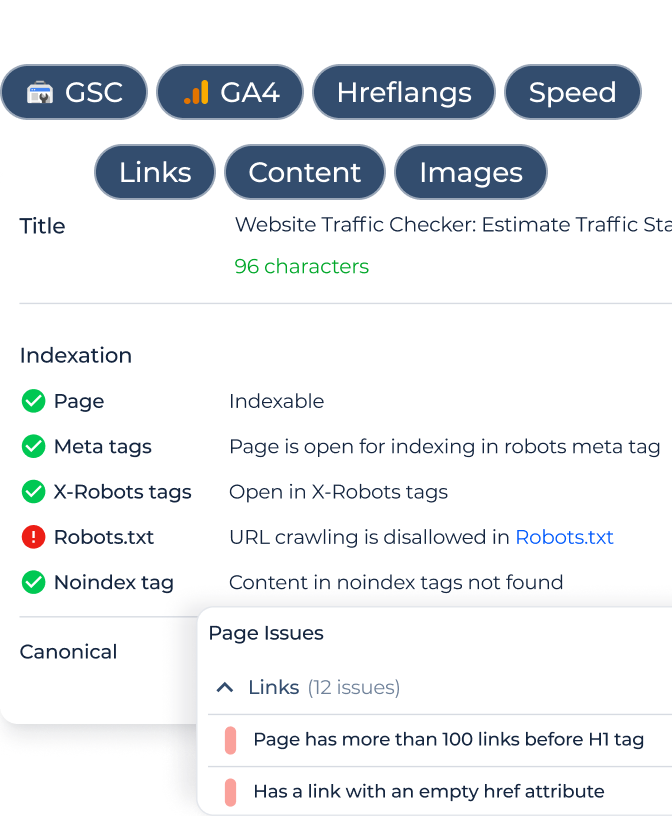What is the best AI overview tracker?
The the best AI overview tracker is a tool that helps you monitor when AI Overviews appear in Google search results, measure your brand’s visibility inside them, and understand how competitors are cited.
An effective tracker detects keywords that trigger AI Overviews and shows which pages from your site are included and how often your brand is mentioned.
An accurate AI overviews tracking should cover several key areas
Keyword detection – shows which queries trigger AI Overviews in Google search.
Brand and URL tracking – monitors how often your brand is cited and which pages are used as sources.
Competitor analysis – reveals who else appears in the same artificial intelligence answers and compares the share of voice.
Clustering and topic insights – group keywords into themes to highlight strengths and weaknesses.
Historical trends – tracks how your visibility in artificial intelligence overviews changes over time.
Segmentation – filters by countries, languages, and devices for global SEO strategies.
Alerts and notifications – instantly inform you when AI Overviews appear or disappear for key queries.
To help you choose the right solution, we compared the best AI Overview trackers on the market. Each tool offers a different balance of keyword detection, brand visibility tracking, competitor insights, clustering, historical data, and reporting.
The table below highlights their strengths and limitations, so you can quickly see which platform best suits your SEO or B2B analytics needs.
Comparison of Google AI overview trackers
| Criteria | Sitechecker | Thruuu | Ziptie | SEOMonitor | SEOClarity |
|---|---|---|---|---|---|
| SERP & AI overview detection | ✅ Yes | ✅ Yes | ✅ Yes | ✅ Yes | ✅ Yes |
| Citations & sources (brand & URLs) | ✅ Detailed (anchors, snippets, positions) | ✅ Yes | ✅ Yes | ✅ Yes | ✅ Yes |
| Competitor tracking | ✅ Yes | ✅ Yes | ✅ Yes | ✅ Yes | ✅ Yes |
| Trends over time | ✅ Historical | ⚠️ Limited | ⚠️ Limited | ✅Daily/weekly | ✅ Historical |
| Keyword import options | ✅ GSC, CSV, Sheets, copy/paste | ✅ Copy/paste | ✅ GSC, AI assistant | ✅ Import & API | ✅ Import & API |
| Data export & reporting | ✅ CSV, Excel, white-label dashboards | ⚠️ Excel, public link | ⚠️ Limited formats | ✅ Custom reports | ✅ Enterprise dashboards |
| Segmentation (country/device/lang) | ✅ Countries, devices, languages | ⚠️ Country only | ⚠️ 10 countries, desktop only | ✅ Multi-device | ✅ Multi-device |
| Dashboard & usability | ✅ Clear, visual, agency-ready | ✅ Detailed reports | ⚠️ Basic | ⚠️ Limited | ⚠️Enterprise-only |
| Alerts & monitoring frequency | ✅ Real-time alerts (coming soon) | ❌ No | ⚠️ Scheduled only | ✅ Daily alerts | ✅ Real-time |
Next, we’ll review each tool in detail.
1. Sitechecker is the best AI overview analysis software
Here is why:
Convenient keyword setup
In Sitechecker, you can add keywords in multiple ways: manually, from a CSV/Google Sheet, or directly from Google Search Console. Importing from GSC gives you the most accurate list of queries for which your site already ranks. CSV or Google Sheets let you focus on the keywords most relevant to your business.
You can easily add new keywords for tracking, group pages, and build semantic clusters by URLs and topics at any time, making organizing data.
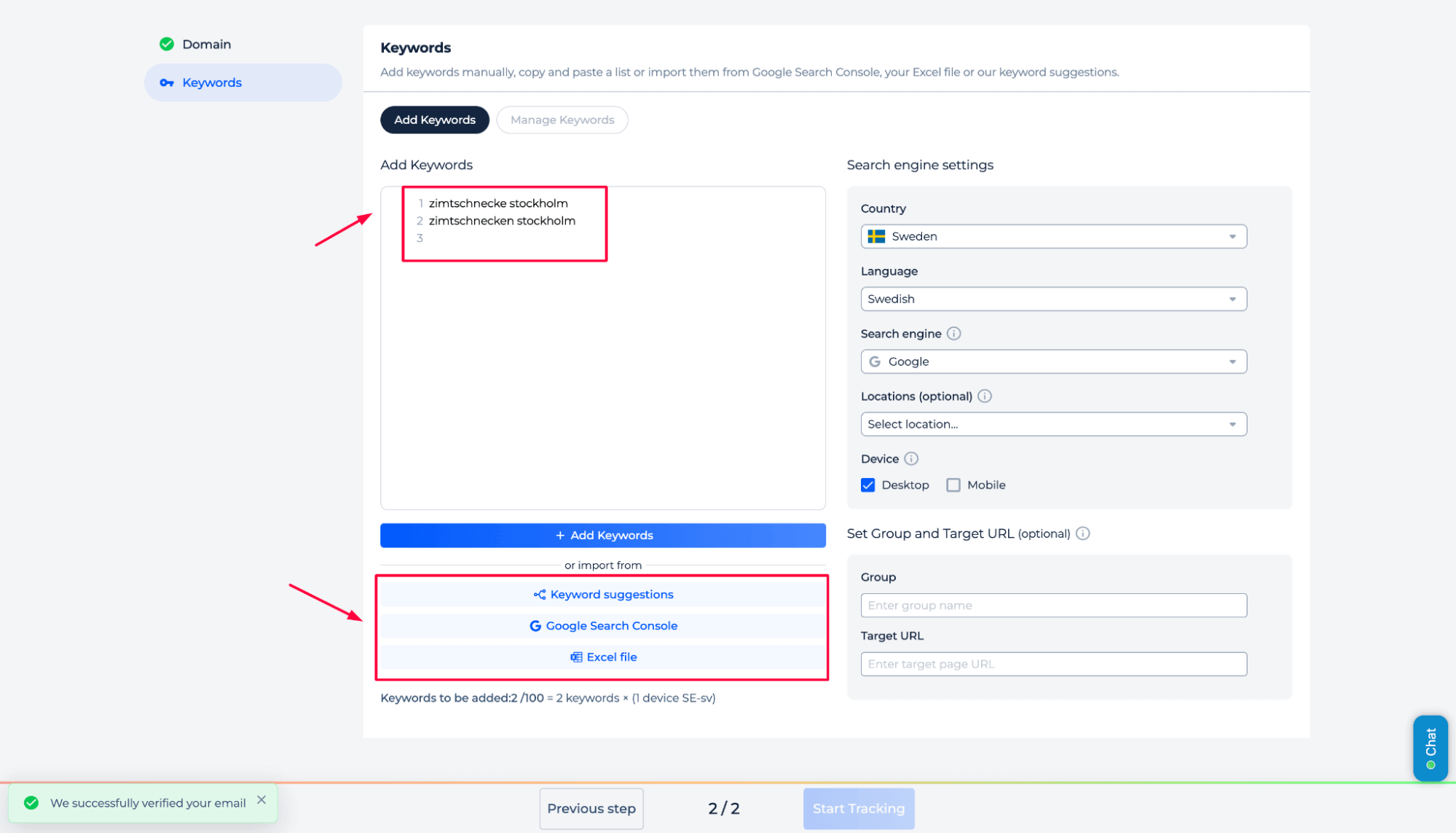
AI overview filtering
Sitechecker’s Rank Tracker lets you instantly filter keywords by those that trigger an AI Overview and those that don’t. In the main dashboard, you can quickly see whether a keyword has an AI Overview in the SERP and check if your brand is cited inside it.
This gives a clear view of opportunities and gaps, helping you focus on the queries where AI overviews impact visibility the most.
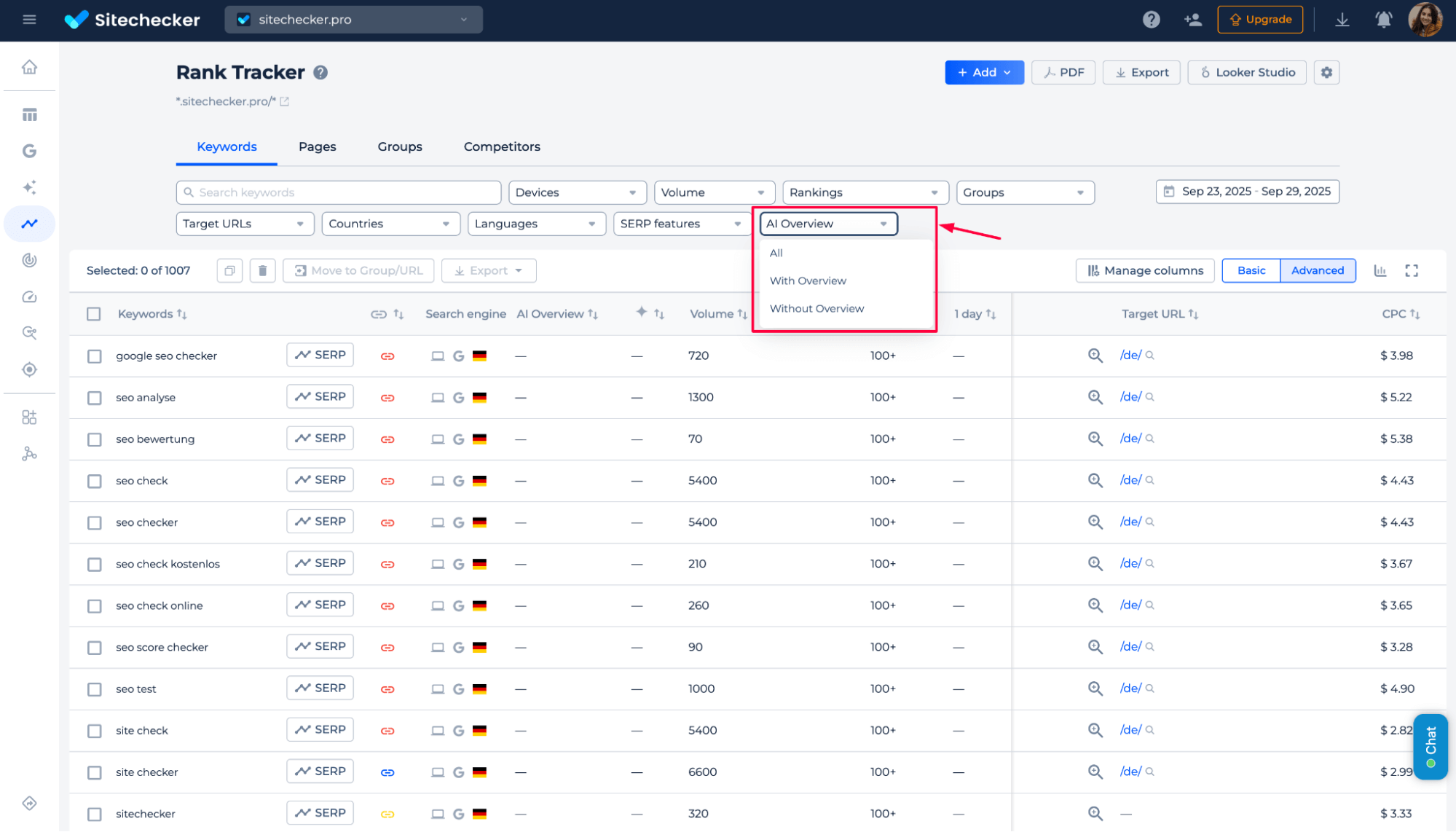
AI overview analysis
Sitechecker provides a detailed breakdown of each AI overview. You can see whether your brand is cited, how many sources are included, and your position among them. For every keyword, the tool shows the exact sources used in the AI snippet, highlights your citation with anchor text and snippet, and lists competing domains.
This allows you to track brand presence, evaluate the quality of your mentions, and compare visibility against other sources in the AI overview.
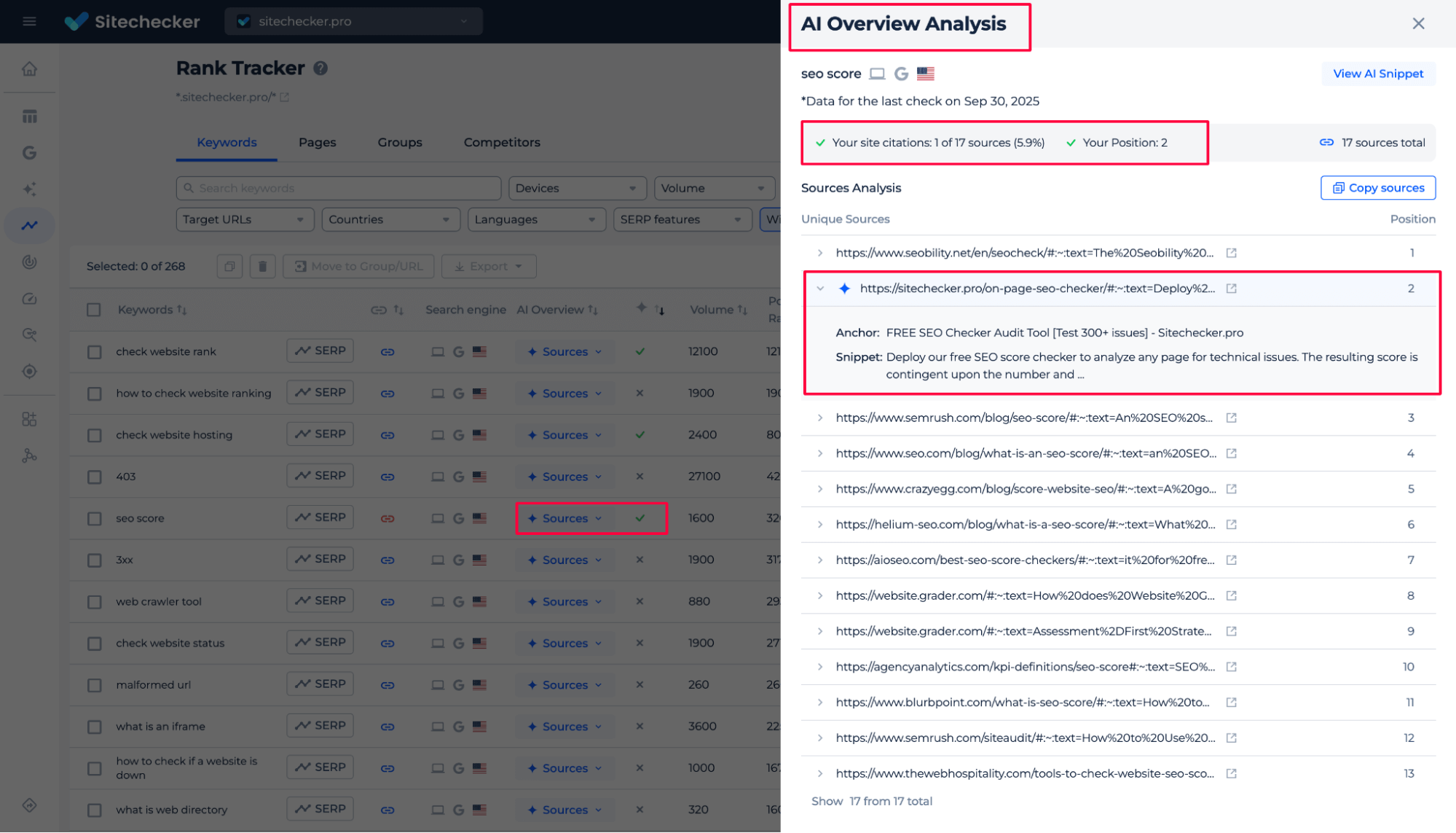
URL & group-level AI overview insights
Sitechecker shows AI Overview visibility for individual keywords, URLs, and page groups.
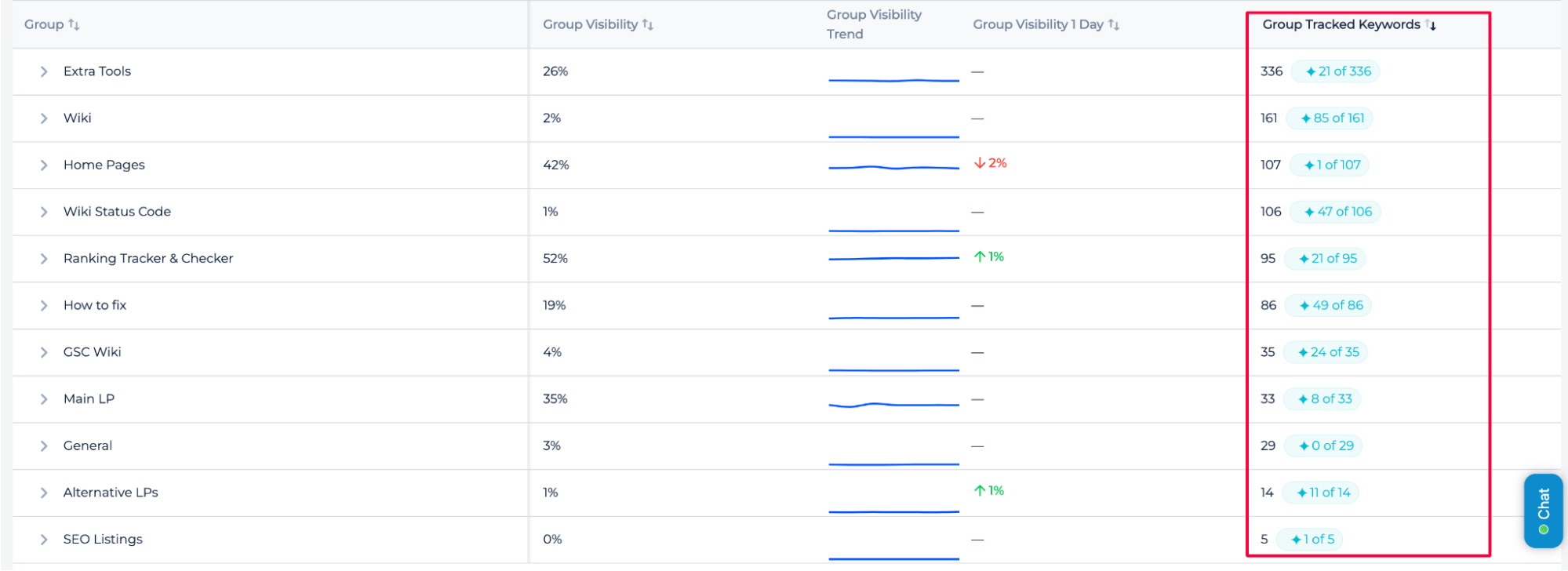
You can instantly see which tracked keywords trigger AI Overviews at the URL level and which do not. At the group level, you can measure how many pages within a cluster are affected by AI Overviews.
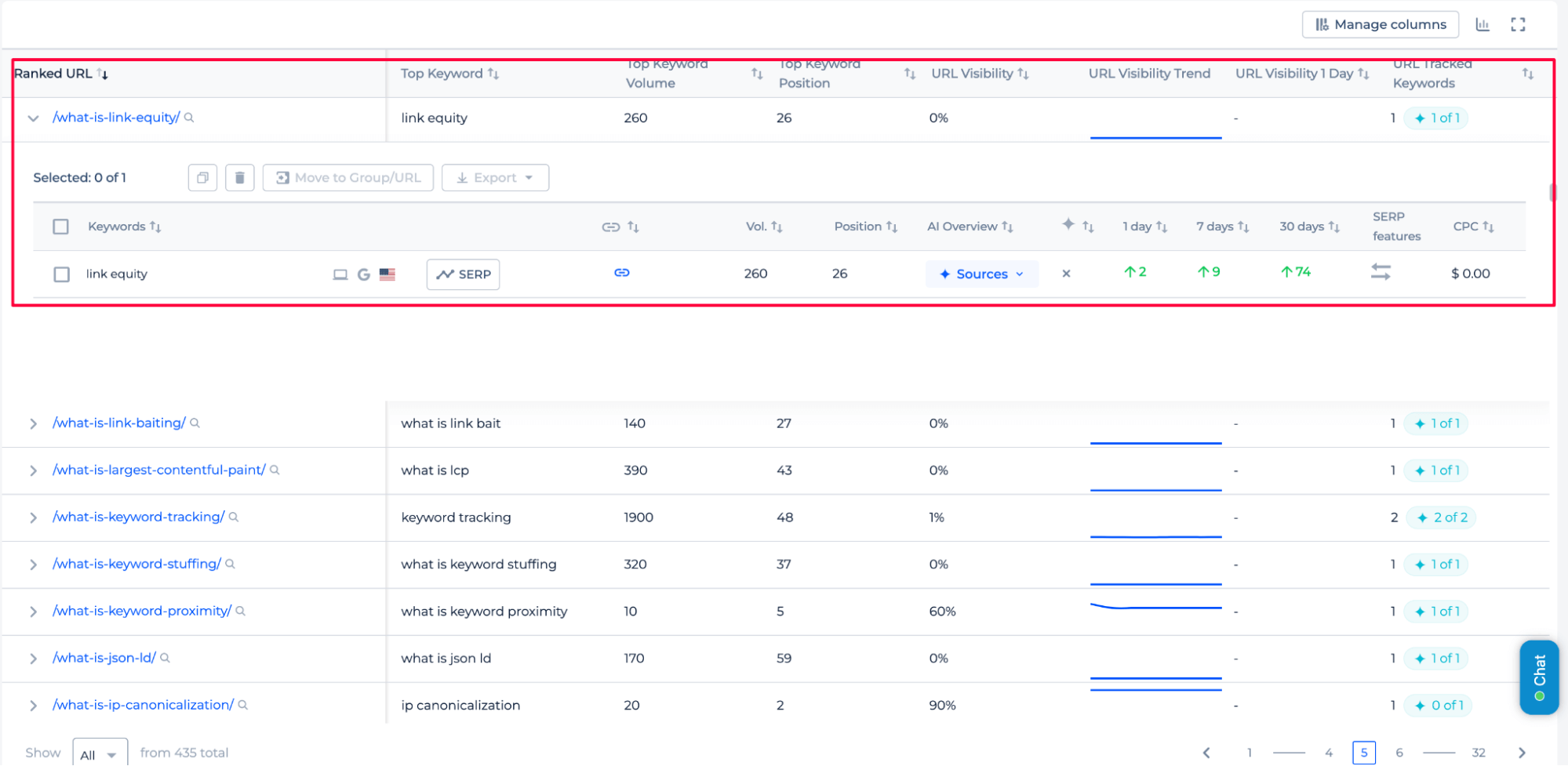
This makes it easy to spot patterns, for example, if traffic drops are connected to AI overviews dominating a specific group of informational content.
AI Overview Alerts (coming soon)
Sitechecker is launching an alert system that will notify you once your website starts ranking in an AI overview. These alerts will be available via email and Slack, allowing teams to react instantly when visibility changes. This feature ensures you never miss new opportunities or shifts in how Google’s AI overviews display your brand.
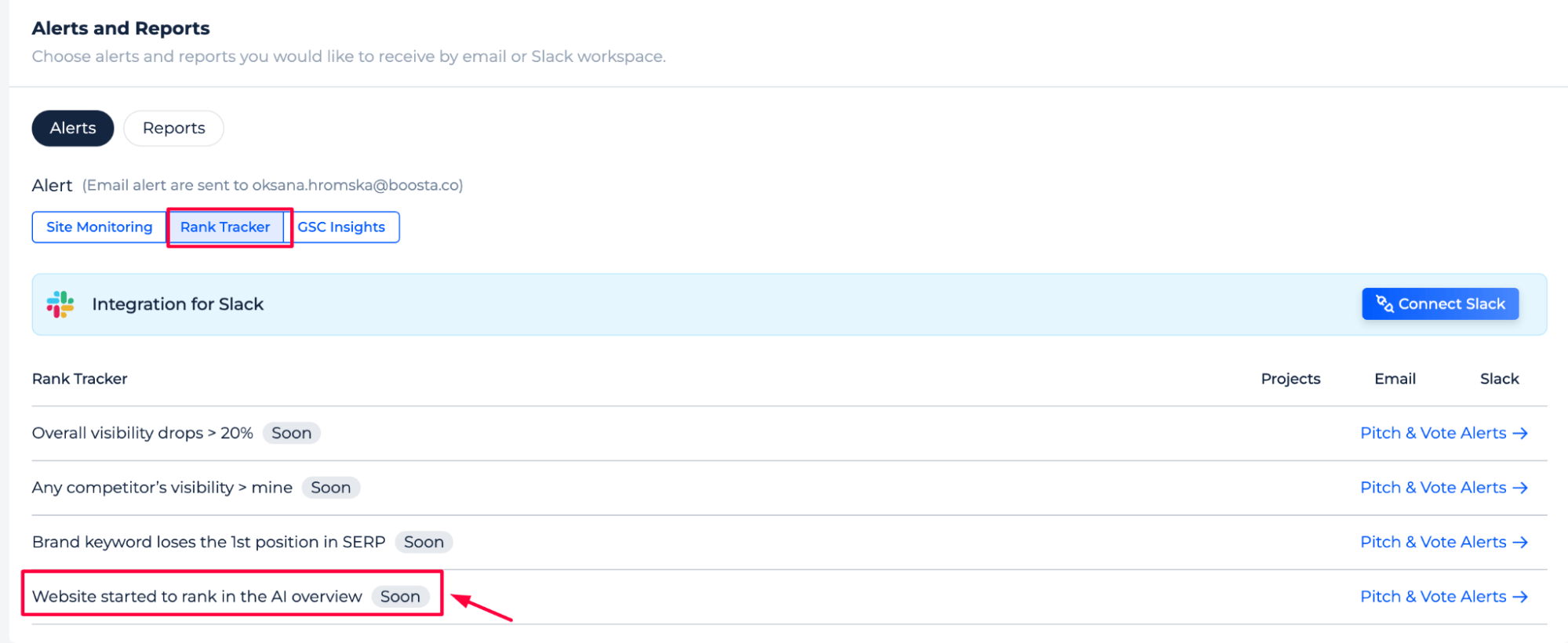
2. Thruuu
Thruuu is an SEO platform that recently introduced an AI Overview tracker alongside its SERP analysis and content tools. Its core strength lies in analyzing how Google generates AI snippets and which sources are cited. The tool allows you to monitor keywords that trigger artificial intelligence overviews, track brand mentions, and review the complete list of domains included as sources. It also provides content insights such as recurring terms and questions from cited pages, helping users better understand how AI results are constructed.
Unlike broader rank tracking platforms, Thruuu is designed with a strong focus on content analysis. While it provides AI Overview visibility reports and exports, its clustering, trend monitoring, and segmentation functionality are more limited than those of specialized trackers.
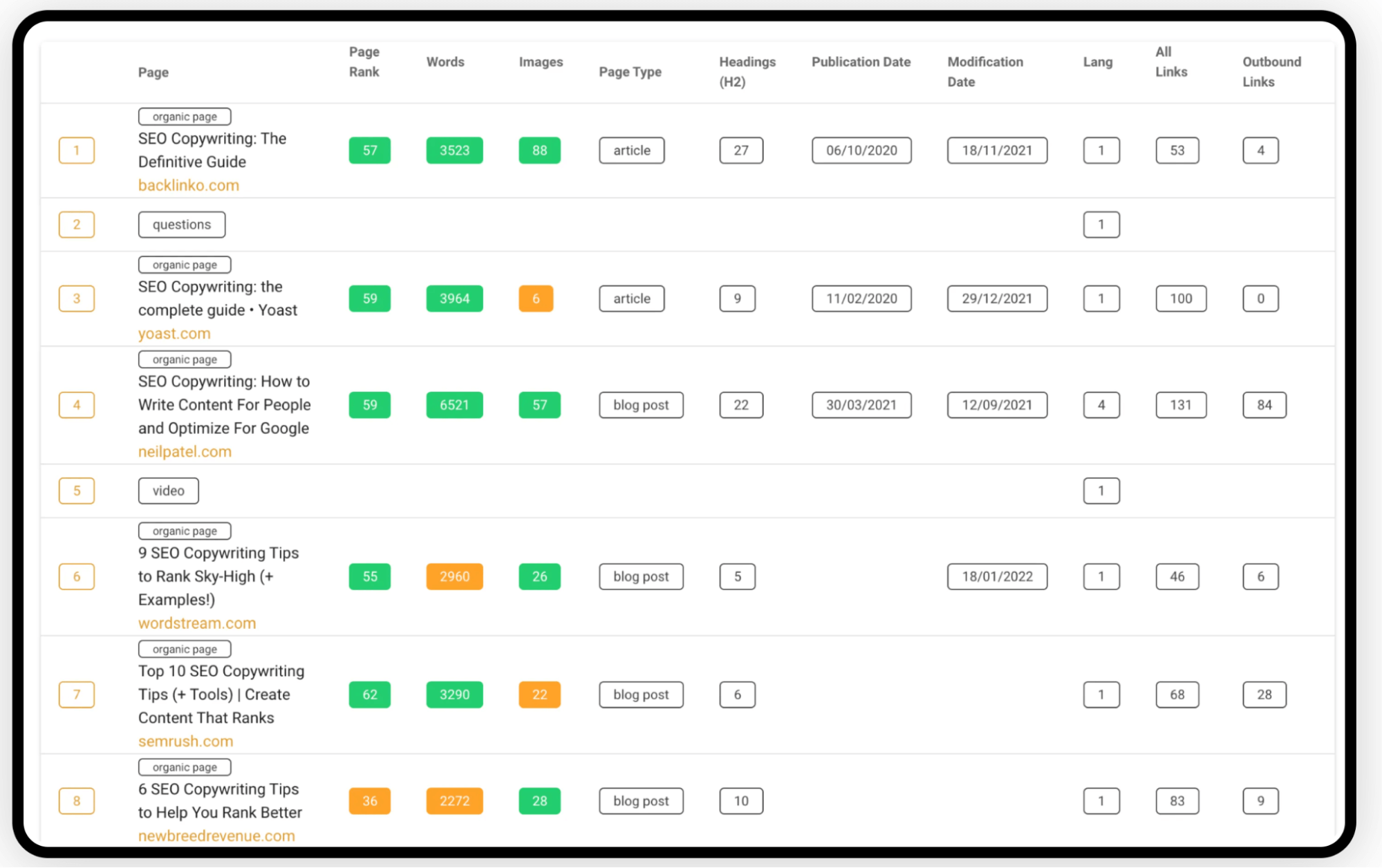
Pros:
✅ Dedicated AI Overview tracker
✅ Shows cited sources and brand mentions
✅ Exportable reports in Excel or public links
Cons:
❌ No recurring automated checks (manual only for now)
❌ Limited support for trend history and segmentation
❌ Lacks alerting and advanced competitor benchmarking
Thruuu is suited for SEO professionals who want to explore how AI Overviews are built and analyze source-level insights, rather than for agencies looking for full-scale tracking and reporting.
3. Ziptie
Ziptie is one of the early tools explicitly built for tracking Google AI Overviews. It positions itself as a lightweight solution for monitoring when and where AI Overviews appear in SERPs. The platform supports keyword tracking across ten countries and focuses on identifying whether a brand or domain is cited in AI-generated answers. One of its key features is the Share of Voice graph, which compares a brand’s presence in AI Overviews against competitors.
The tool provides multiple ways to add keywords, including manual input, import from Google Search Console, and even an AI assistant to generate query lists. Users can also schedule checks and receive updates on the presence of AI Overview. However, the platform’s limitations include desktop-only tracking, restricted country coverage, and occasional delays in delivering results.
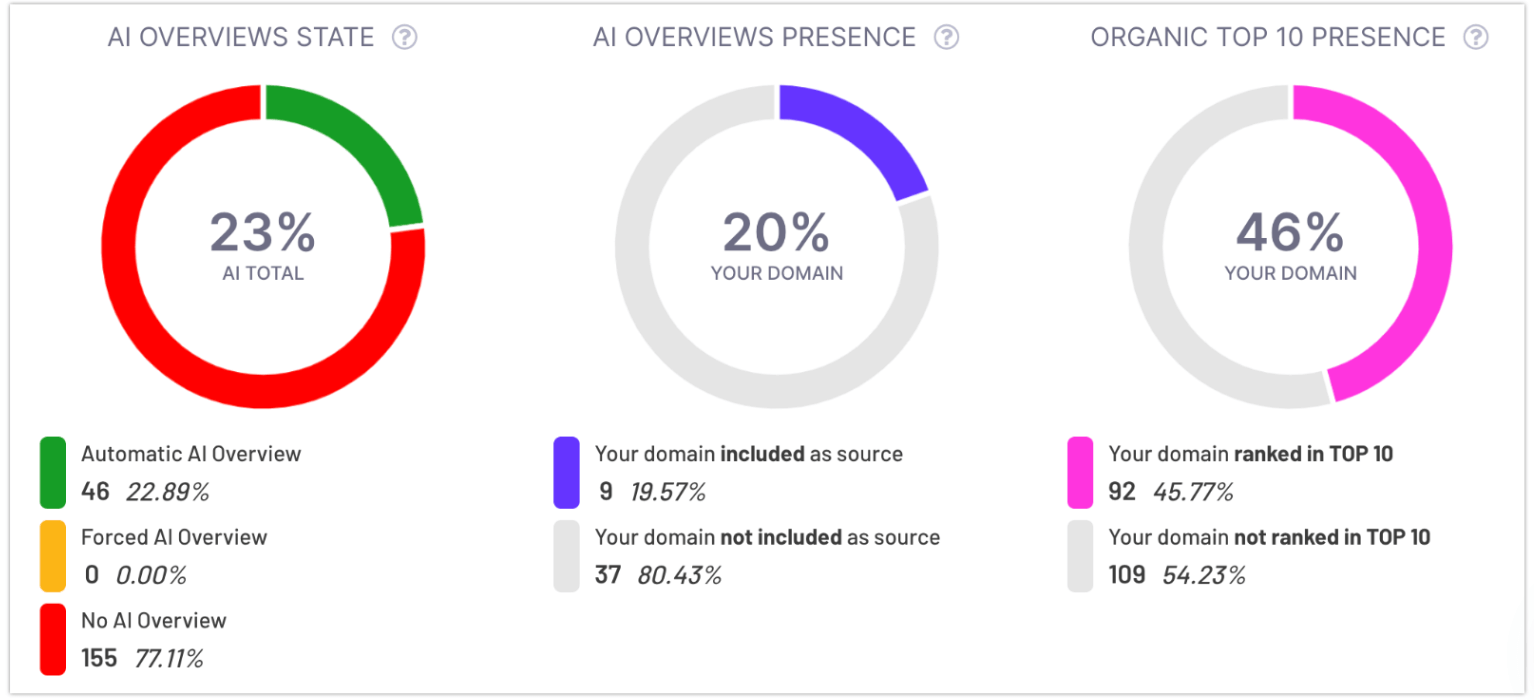
Pros:
✅ Early mover focused on AI Overview tracking
✅ Tracks Share of Voice for brand vs competitors
✅ Scheduled monitoring available
Cons:
❌ Can only track in 10 countries
❌ No mobile device tracking
❌ Limited scope compared to complete SEO suites
Ziptie is mainly suited for users who want a straightforward way to monitor AI Overview presence and benchmark brand mentions regionally, without the depth of advanced trend analysis or large-scale reporting.
4. SEOMonitor
The tool tracks which keywords trigger AI Overviews, whether your brand is mentioned, and which URLs are cited as sources. It supports desktop and mobile devices and lets users receive daily, weekly, or monthly insights.
A notable advantage of SEOMonitor is its API access, which allows the integration of AI Overview data into internal systems and reporting dashboards. However, while the platform provides structured data and competitive insights, its interface can be slower to navigate, and access to the free trial is limited by region.
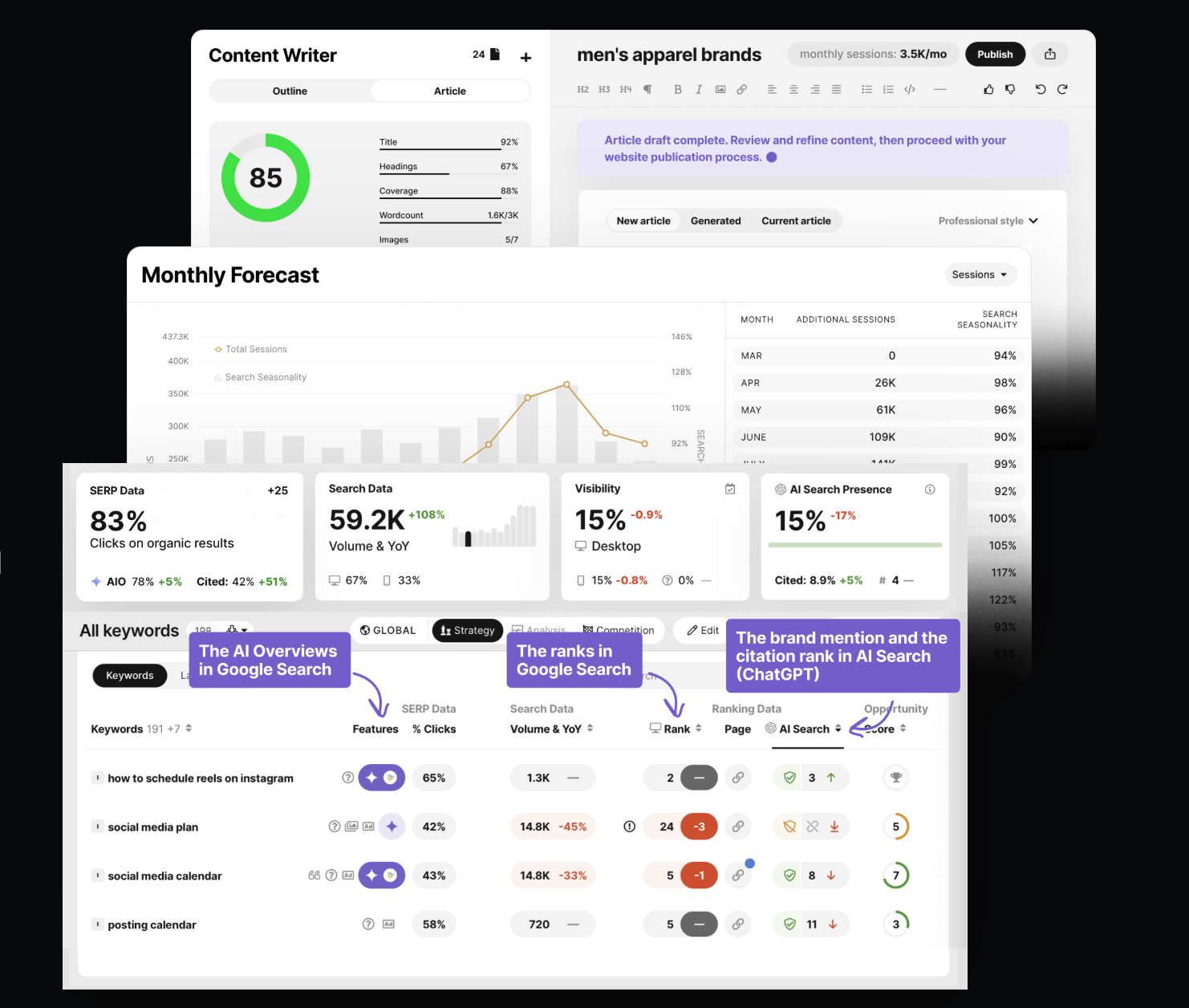
Pros:
✅ Daily artificial intelligence overview tracking
✅ Covers both desktop and mobile
✅ Tracks brand mentions, sources, and competitors
Cons:
❌ Free trial availability is limited to specific regions
❌ Larger keyword sets require higher-tier plans
❌ API access available only on advanced plans
SEOMonitor is best suited for agencies and enterprise teams that need regular AI Overview monitoring across devices, combined with integration capabilities to support internal workflows.
5. SEOClarity
SEOClarity is an enterprise-level SEO platform with an AI Overviews Tracker as part of its advanced analytics suite. The tool identifies which keywords trigger AI Overviews, shows if your brand or URLs are cited, and highlights the prompts that generate AI snippets. It also provides real-time monitoring, competitor benchmarking, and historical data to evaluate long-term changes in visibility.
In addition to tracking, SEOClarity offers content optimization recommendations based on AI Overview insights. While this makes it a powerful solution for large organizations, access is tied to custom enterprise contracts, and the platform can feel overwhelming for smaller teams due to its complexity.
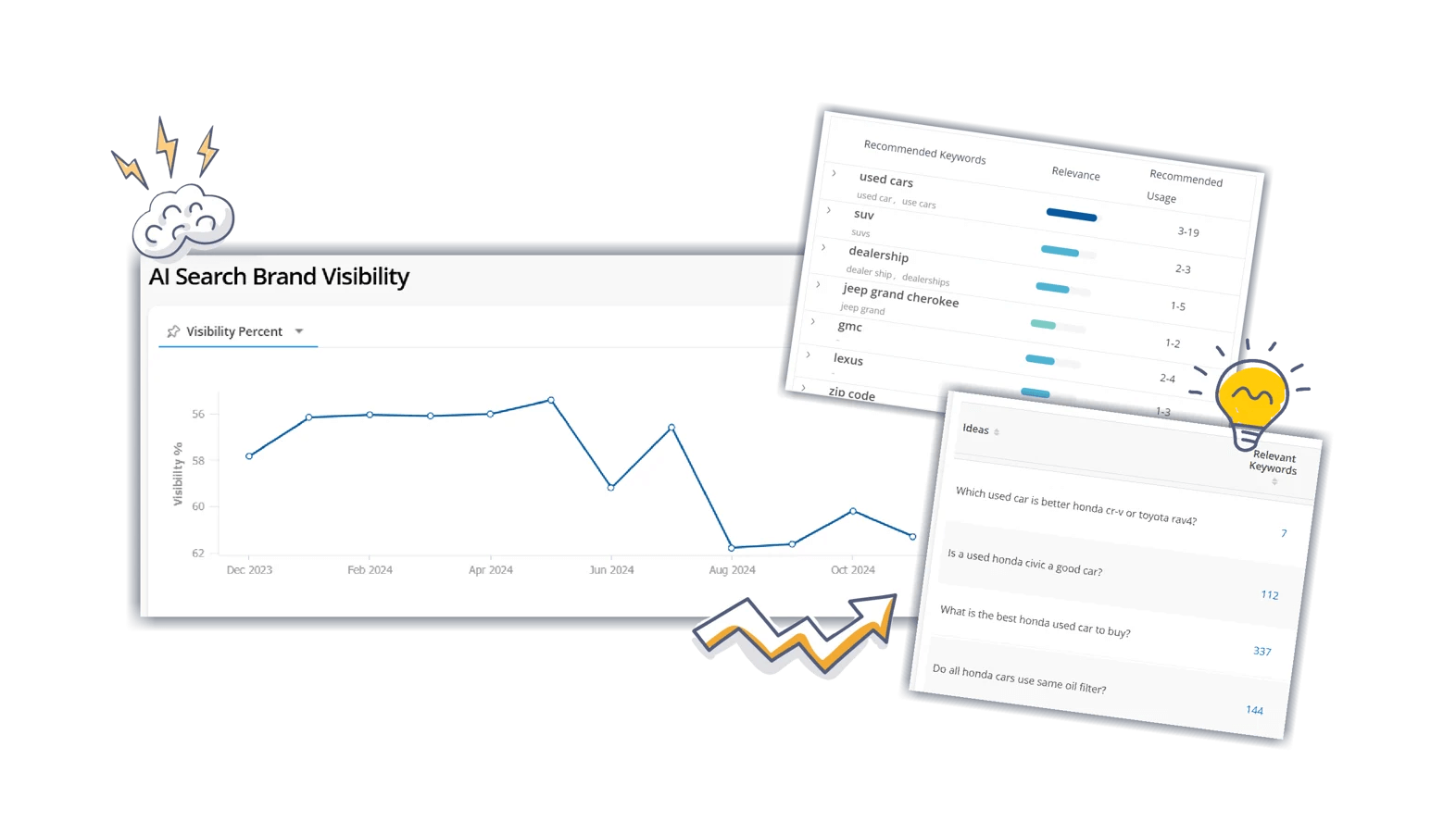
Pros:
✅ Tracks brand mentions, sources, and prompts
✅ Detailed competitor benchmarking
✅ Сontent recommendations
Cons:
❌ High cost with custom enterprise pricing
❌ Platform designed primarily for enterprise use cases
❌ Requires onboarding and training to leverage fully
SEOClarity is best suited for large enterprises and agencies that need deep competitive analysis and strategic recommendations at scale.
Conclusion
AI Overviews are reshaping Google Search, and tracking them is now essential. Among the tools compared, Sitechecker offers the most complete solution with easy keyword setup, filtering, citation analysis, group-level insights, and upcoming alerts. While Thruuu, Ziptie, SEOMonitor, and SEOClarity have strengths, Sitechecker best covers the practical needs of agencies, in-house teams, and B2B companies.





